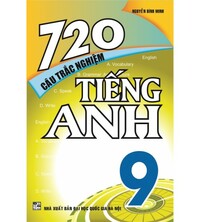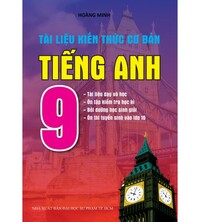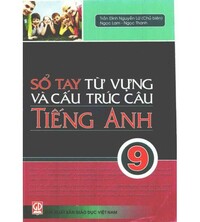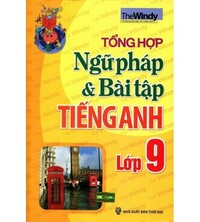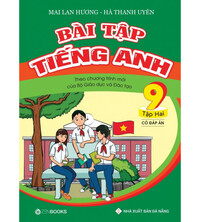Tiếng Anh 9 Unit 10 A Closer Look 1
Vocabulary 1. Write a word or phrase from the box under each picture. 2. Complete each sentence with word or phrase from 1. 3. Choose the correct answer A, B, C, or D. Pronunciation Rhythm in sentences 4. Listen to the sentences and pay attention to the bold syllables. Does the speaker place stress on them? 5. Circle the stressed syllables in the sentences. Listen, check, and repeat.
Bài 1
Vocabulary
1. Write a word or phrase from the box under each picture.
(Viết một từ hoặc cụm từ trong khung dưới mỗi bức tranh.)
|
habitats flora and fauna grassland nature reserves food chain poles |
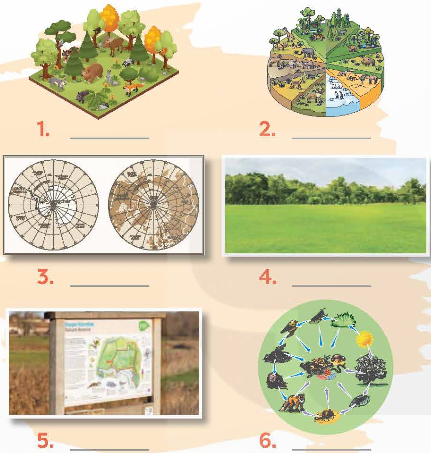
Lời giải chi tiết:
1. flora and fauna (hệ thực vật và động vật)
2. habitats (môi trường sống)
3. poles (vùng cực)
4. grassland (đồng cỏ)
5. nature reserves (bảo tồn thiên nhiên)
6. food chain (chuỗi thức ăn)
Bài 2
2. Complete each sentence with word or phrase from 1.
(Hoàn thành mỗi câu với từ hoặc cụm từ từ 1.)
1. In a _______, some animals eat other animals and become food for a third group of animals.
2. A _______ is often wide and its plants are mostly grass and flowers.
3. Areas of land to protect animals and plants are called _______.
4. The North and South _______ are both extremely cold and icy.
5. Natural _______ for pandas are bamboo forests.
Lời giải chi tiết:
|
1. food chain |
2. grassland |
3. nature reserves |
|
4. poles |
5. habitats |
|
1. In a food chain, some animals eat other animals and become food for a third group of animals.
(Trong chuỗi thức ăn, một số động vật ăn thịt động vật khác và trở thành thức ăn cho nhóm động vật thứ ba.)
2. A grassland is often wide and its plants are mostly grass and flowers.
(Đồng cỏ thường rộng và thực vật chủ yếu là cỏ và hoa.)
3. Areas of land to protect animals and plants are called nature reserves.
(Diện tích đất bảo vệ động vật, thực vật được gọi là khu bảo tồn thiên nhiên.)
4. The North and South poles are both extremely cold and icy.
(Cực Bắc và cực Nam đều cực kỳ lạnh và băng giá.)
5. Natural habitats for pandas are bamboo forests.
(Môi trường sống tự nhiên của gấu trúc là rừng tre.)
Bài 3
3. Choose the correct answer A, B, C, or D.
(Chọn câu trả lời đúng A, B, C hoặc D.)
1. When humans use a natural habitat for farming and housing, they cause _______.
A. climate change
B. global warming
C. habitat loss
D. ecological balance
2. When Earth's average temperature increases, we face _______.
A. ecological balance
B. global warming
C. pollution
D. protection
3. Each of us can lend a hand to _______ the natural environment.
A. hunt
B. change
C. preserve
D. pollute
4. We can keep a(n) _______ by stopping hunting and cutting down trees.
A. ecological balance
B. habitat loss
C. climate change
D. nature reserve
5. One way to _______ Mother Earth is by planting more trees.
A. keep
B. harm
C. provide
D. protect
Lời giải chi tiết:
|
1. C |
2. B |
3. C |
4. A |
5. D |
1. C
When humans use a natural habitat for farming and housing, they cause habitat loss.
(Khi con người sử dụng môi trường sống tự nhiên để trồng trọt và làm nhà ở, họ sẽ gây ra tình trạng mất môi trường sống.)
A. climate change (n): biến đổi khí hậu
B. global warming (n): sự nóng lên toàn cầu
C. habitat loss (n): mất môi trường sống
D. ecological balance (n): cân bằng sinh thái
2. B
When Earth's average temperature increases, we face global warming.
(Khi nhiệt độ trung bình của Trái đất tăng lên, chúng ta phải đối mặt với hiện tượng nóng lên toàn cầu.)
A. ecological balance (n): cân bằng sinh thái
B. global warming (n): sự nóng lên toàn cầu
C. pollution (n): ô nhiễm
D. protection (n): bảo vệ
3. C
Each of us can lend a hand to preserve the natural environment.
(Mỗi chúng ta có thể góp một tay để bảo vệ môi trường tự nhiên.)
A. hunt (v): săn bắn
B. change (v): thay đổi
C. preserve (v): bảo tồn
D. pollute (v): gây ô nhiễm
4. A
We can keep an ecological balance by stopping hunting and cutting down trees.
(Chúng ta có thể giữ cân bằng sinh thái bằng cách ngừng săn bắn và chặt cây.)
A. ecological balance (n): cân bằng sinh thái
B. habitat loss (n): mất môi trường sống
C. climate change (n): biến đổi khí hậu
D. nature reserve (n): khu bảo tồn thiên nhiên
5. D
One way to protect Mother Earth is by planting more trees.
(Một cách để bảo vệ Đất Mẹ là trồng thêm cây xanh.)
A. keep (v): giữ
B. harm (v): gây hại
C. provide (v): cung cấp
D. protect (v): bảo vệ
Bài 4
Pronunciation
Rhythm in sentences
(Nhịp điệu trong câu)
4. Listen to the sentences and pay attention to the bold syllables. Does the speaker place stress on them?
(Nghe các câu và chú ý đến các âm tiết in đậm. Người nói có nhấn trọng âm cho chúng không?)
1. Earth is the third planet from the Sun.
(Trái đất là hành tinh thứ ba tính từ Mặt trời.)
2. Oceans, seas, rivers, and lakes are water bodies.
(Đại dương, biển, sông, hồ là các thủy vực.)
3. The North and South poles are extremely cold and icy.
(Cực Bắc và Nam rất lạnh và băng giá.)
4. Do moonquakes last up to half an hour?
(Trận động đất có kéo dài tới nửa giờ không?)
5. Preserving natural resources is very important.
(Bảo tồn tài nguyên thiên nhiên là rất quan trọng.)
Bài 5
5. Circle the stressed syllables in the sentences. Listen, check, and repeat.
(Khoanh tròn những âm tiết được nhấn mạnh trong câu. Nghe, kiểm tra và lặp lại.)
1. We're doing a study on climate change.
2. What is the distance from Earth to Mars?
3. They'll have a discussion on natural habitats.
4. Plants provide us with food, oxygen, and energy.
5. Our school organised various activities on Earth Day.
Lời giải chi tiết:
1. We're DOing a STUdy on CLImate CHANGE.
(Chúng tôi đang thực hiện một nghiên cứu về biến đổi khí hậu.)
2. What is the DIStance from EARTH to MARS?
(Khoảng cách từ Trái Đất đến Sao Hỏa là bao nhiêu?)
3. They'll have a DIScusSION on NATuRAL HABiTATS.
(Họ sẽ thảo luận về môi trường sống tự nhiên.)
4. Plants proVIDE us with FOOD, OXygen, and ENerGY.
(Thực vật cung cấp cho chúng ta thức ăn, oxy và năng lượng.)
5. Our SCHOOL orGANised VARious acTIviTIES on EARTH Day.
(Trường chúng tôi tổ chức nhiều hoạt động khác nhau vào Ngày Trái Đất.)
Search google: "từ khóa + timdapan.com" Ví dụ: "Tiếng Anh 9 Unit 10 A Closer Look 1 timdapan.com"

